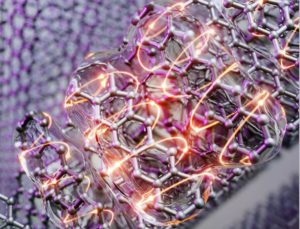
Absorption of light in a molecular system typically leads to formation of a correlated electron-hole pair with zero spin, called singlet exciton. If energetically allowed, this singlet exciton may eventually transform into two triplet excitons (with spin 1 each), thereby doubling the number of excited charge carriers. Singlet fission may therefore boost photovoltaic efficiency. The primary step of singlet fission is the ultrafast creation of a correlated triplet pair. Whereas several mechanisms have been proposed to explain this step, none has emerged as a consensus. The challenge lies in tracking the transient excitonic states. In this work, time- and angle-resolved photoemission spectroscopy is employed to observe the primary step of singlet fission in crystalline pentacene. Our results indicate a charge-transfer mediated mechanism with a hybridization of Frenkel and charge transfer states in the lowest bright singlet exciton. Detailed knowledge is obtained about the localization and the orbital character of the exciton wave functions recorded in momentum maps. This allows to directly compare the localization of singlet and bitriplet excitons and decompose energetically overlapping states on the basis of their orbital character. A more general perspective of this work is that orbital- and localization-resolved dynamics promise deep insights into the mechanics governing molecular systems and solids, in particular, topological materials.